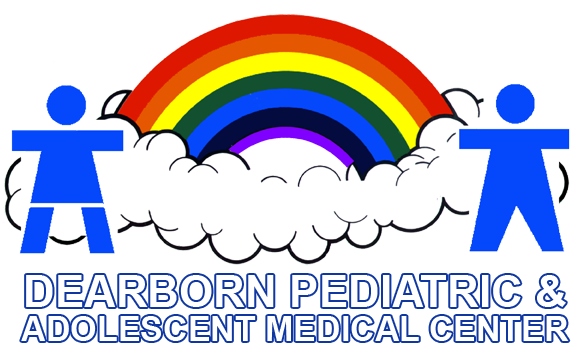
ADD & ADHD
ADHD, attention deficit/hyperactivity disorder, was called hyperkinetic impulse disorder when it was first included as a psychiatric diagnosis in1968. The name was changed to attention deficit disorder in 1980 and finally became ADHD in 1987, although both ADHD and ADD are still used.
In the 1990s, there was a sharp increase in the number of cases diagnosed and people began to wonder if there was an epidemic. Were doctors and parents just beginning to recognize the behavior? Pharmaceutical companies began to develop new medications to cover this “epidemic”.
Now ADHD is the most frequently diagnosed children’s behavioral problem in America and the numbers continue to grow.
What causes ADHD?
- Genetics – People who were diagnosed as having ADHD as children have about a 50% chance of having a child with the disorder.
- Pregnancy problems – Babies who are born prematurely or have a low birth weight are at higher risk for developing ADHD. In addition, there is evidence that smoking or alcohol consumption during pregnancy increases the risk. Researchers are also coming to the conclusion that exposure to pollution, especially from lead, pesticides, and PCBs during pregnancy can be a factor in the development of ADHD.
- Brain anatomy and proteins – Some differences have been noted on MRIs between adults and children with ADHD and adults and children without the disorder. Certain parts of the brain appear smaller with decreased cortical thickness and gray matter. In addition, there seems to be imbalances between the neurotransmitters dopamine and norepinephrine in ADHD patients. No one is sure of the significance of these findings.
How is ADHD diagnosed?
ADHD is not an easy diagnosis. There is no special test. A doctor or mental health professional must evaluate the child and determine if there are symptoms of inattention and of hyperactivity/impulsivity present. The symptoms have to have been present before age 12, be present in more than one environment (for example – at home, on the playground, at school), and must interfere with the child’s ability to function. A bouncy child may not have ADHD, but rather be bored or have other things they need.
At least six symptoms from each group must be present to make the diagnosis.
Inattention
- Unable to pay close attention, makes careless mistakes.
- Doesn’t listen, even when talked to directly.
- Unable to organize.
- Can’t seem to follow directions.
- Loses things easily.
- Forgetful.
- Distracted easily.
- Doesn’t like to do homework or complicated tasks, such as puzzles.
Hyperactivity/impulsivity
- Can’t sit still.
- Chatters constantly.
- Cannot be quiet.
- Will not stay in seat when told to.
- Runs around, climbs on things.
- Cannot wait for a turn.
- Constantly interrupting.
The other requirement for a diagnosis of ADHD is that the symptoms cannot be explained by another cause, such as:
- Anxiety disorder
- Autism
- Fetal alcohol syndrome
- Hearing problems
- Vision problems
- Seizure disorder
- Mood disorder, depression, bipolar disorder
- Sleep disorder
- Deficits in intellectual ability
- Dyslexia or similar disability
How is ADHD treated?
Treatment depends on which subgroup of ADHD the child falls into.
- Combined hyperactivity and inattention – This is the commonest form with a very short attention span and impulsive, poorly controlled behavior.
- Primarily inattentive behavior – These children tend to be quiet, but they are lost in a daydream most of the time. This group is predominantly female.
- Primarily hyperactive – impulsive behavior – These children are extremely disruptive and difficult to control.
Initial therapy is behavioral, giving special training to the parents and the child and including the teacher on the team.
The mainstay of treatment, however, is medication.
- The usual medications used are called psychostimulants, some of which have been used for a long time. The stimulant drugs seem to slow the hyperactive child down and lessen impulsive behavior. Increased ability to concentrate brings grades up. The side effects are generally mild and tend to occur early on in treatment. Finding the right medication and dosage can be challenging and may require a trial of medications.
- If there is no response or the child cannot tolerate the stimulants, there are other medications which are not stimulants. They work on the brain in different ways.
- Finally, some children respond to antidepressants.
Will a special diet help ADHD?
There is no evidence that any particular food has any effect on ADHD behaviors – including sugar. Doctors do recommend foods that are good for the brain in general.
- Foods high in protein – Lean meats, fish, poultry, cheese, nuts, and beans are the best.
- Limit simple sugars – Reduce the amount of candy, ice cream, cookies, etc.
- Increase the amount of fruits and vegetables.
If you have any concerns that your child might have ADHD, please set up an appointment for Dr. Fakih to do an evaluation. She has extensive knowledge and experience with ADHD and can answer your questions and help you choose the right path.
Dearborn Pediatric & Adolescent Medical Center
2547 Monroe St
Dearborn, MI 48124
Phone: (313) 791-8300
Fax: (313) 791-8302
Email: info@dearbornpediatric.com
Hours
Monday - Friday 9:00AM - 5:00PM
By Appointment Only NO WALK-INS
